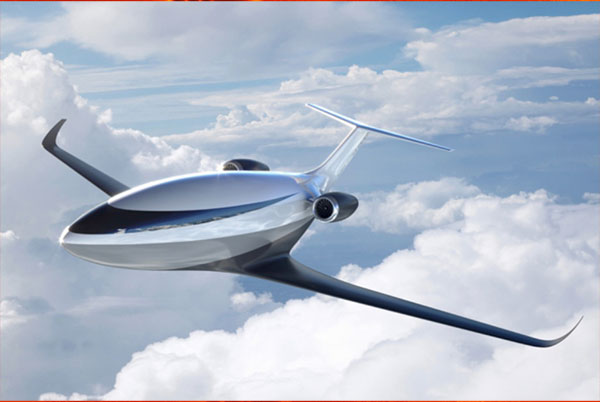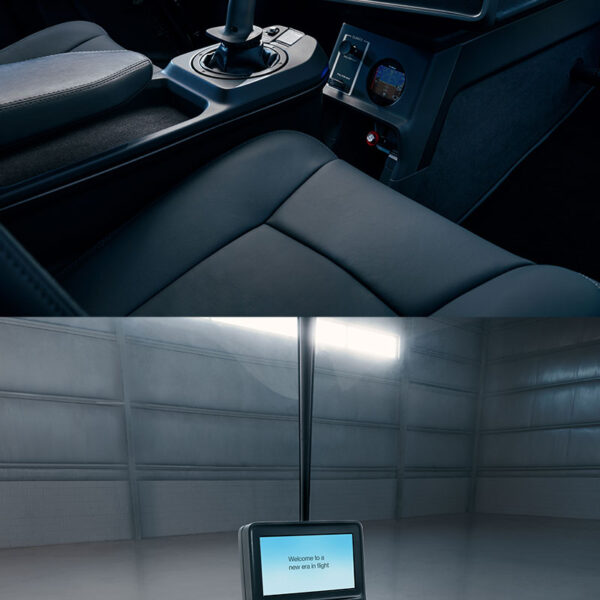Three Ways Gulfstream’s New Pending Patent Takes Premium Private Jet Cabins to the Next Level
Over the years, the cabin environment of a modern private jet has evolved into an enclave of luxurious perfection. With each successive generation of aircraft, manufacturers task their design and engineering teams to top their efforts and those of the competition. But with several airframe manufacturers and many completion centers investing massive amounts of resources into this race of innovation, how does one elevate their company’s offerings above the rest?
Based on a newly published patent from Gulfstream, part of the strategy involves becoming an early adopter of emerging technologies, integrating them into their aircraft, and patenting the resulting blend for use in the private jet industry.

Published last September as “Window for an aircraft and display for aircraft window,” one of Gulfstream’s more innovative concepts involves using a large, transparent display screen that cleanly integrates with the sidewall of a passenger cabin. The screen would be curved to match the arc of the cabin wall, and it would be overlaid atop the cabin windows. This design could introduce imaginative concepts while providing legitimate functional benefits to the cabin design.
Here, we explore some potential uses for this new patent.
SMART PRIVATE JET WINDOWS
Gulfstream’s detailed description of layering screen material directly on top of existing cabin windows creates many possibilities. Already provided with a view outward, a passenger could be presented with complimentary information delivered in real-time. This would provide an experience that is more informative or entertaining than ever before.
Utilizing GPS data, a “smart window” could overlay small labels next to passing scenery. Climbing out from Seattle on a clear day, for example, a passenger unfamiliar with the Pacific Northwest could be presented with a label superimposed next to Mount Rainier that gradually pans across the screen to remain adjacent to the mountain itself in the window. Additional info, such as elevation, could also be included for a bite-size lesson in geography.
The same concept could be utilized for cities, islands, and bodies of water. No longer would you wonder what city or lake you’re passing over when the smart window clearly identifies such landmarks. Games could even be integrated, where a landmark could be highlighted but not defined while passengers go head-to-head in an immersive and educational trivia game.

Dassault’s overhead galley skylight would create even more possibilities. A smart window could be integrated with the skylight to highlight planets and constellations visible above. This would provide a futuristic take on the sextant ports utilized for celestial navigation in the early days of long-distance air travel.
Similarly, a smart window could utilize real-time air traffic data to superimpose visual tags adjacent to other aircraft within view. While this would provide more entertainment than functionality, passengers of Falcons or Gulfstreams would likely be amused to look down and observe scheduled airline flights trundling along at lower speeds and altitudes during a transatlantic crossing.
VIRTUALLY TRANSLUCENT WALLS
As early as 2011, BAE Systems began investigating active camouflage, in which a tank was covered with small panels that could alter their temperature individually to create an infrared silhouette of a different vehicle. More recently, camera and display screen technology has enabled a more advanced form of active camouflage. A vehicle or object could display the scene behind it, thus blending into the background and disappearing from view.

From duct tape to the Jeep to GPS, cutting-edge military technology has been known to evolve into useful civilian products, and active camouflage could follow suit. As cameras become ever smaller and easier to embed into various surfaces, and as display screens evolve to display increasingly crisp and lifelike visuals, this innovation has more potential than ever to provide functional benefits in everyday life.
In the case of the Gulfstream wall monitor patent, a system of cameras and display screens could be integrated into the cabin ceiling, walls, and even floor to display the outside scene obscured by the aircraft’s fuselage. External cameras would capture the view and display it in high resolution and real-time to give the appearance of a fully-translucent fuselage.

Whether it’s a majestic sunset at 51,000 feet or a dramatic mountainous approach into Aspen, passengers could be immersed in the outside view. The forward bulkhead could make the cockpit seemingly disappear, providing a look ahead. With proper flooring, sections of the floor could even utilize the technology to create a private jet’s version of a glass-bottom boat.
SPACE-SAVING LARGE CABIN JET DISPLAYS
In the race for a more premium private jet cabin experience, much effort is focused on creating an open, airy feeling. Within the confines of a 6-foot tall or smaller space, designers strive to create an illusion of spaciousness through lighting and clever design when technical limitations preclude creating actual space. But by integrating existing displays neatly into the cabin walls themselves, actual space can indeed be created.
Presently, cabin displays are mounted in two ways, and both present both technical and physical challenges.

Bulkhead-mounted displays are inherently limited in size. To enable passage through the private jet cabin, these displays are typically constrained to ¼ to ⅓ of the cabin width. Additionally, many tend to be placed above the headrest level. This provides space for the seating below but also elevates the display to a higher-than-ideal position.
Pillar-mounted displays are movable, often unfolding from a stowed position within tables or side compartments. While these have the advantage of being hidden when not in use, the design necessitates using heavy, complex, and expensive arms and linkage mechanisms. They also occupy valuable space within the cabin, regardless of whether they’re stowed or unfolded.
A thin, curved display neatly integrated with the wall of the large cabin jet could solve all of these problems. At the tap of a menu, an entire cabin wall could illuminate, presenting a heretofore unparalleled screen size. Multiple occupants could utilize a single large screen, pivoting their seats into a position that enables comfortable viewing.
Such a display could extend from floor to ceiling, providing vastly more screen area than existing displays. The user could create custom, interactive desktop suites to integrate video content with adjacent widgets. Upon settling into a seat, the user’s preferred suite could automatically render, placing their preferred information and functions in their preferred positions.

To the delight of engineers and designers, these displays would occupy virtually no additional cabin space beyond the thin layer integrated into the cabin walls. All existing monitors, storage cabinets, and mounting systems could be removed from cabins. In addition to opening up physical space within the cabin and eliminating components subject to wear and mechanical failure, this would also provide significant weight savings.
SUMMARY
Gulfstream Aerospace filed this patent in March 2019, and it was published in September 2022. Presently, the status is listed as “pending,” and it has thus not yet been awarded to Gulfstream. If and when that happens, the technology could likely be adapted to current and future models.
Integrating the technology with current models would require the issuance of a supplemental type certificate (STC) to enable its installation and use. And while that process requires a sometimes-lengthy process of application and approval with the FAA, that process is something Gulfstream is entirely capable of managing in a relatively efficient manner.
Topics Related To: FUTURE OF FLIGHT
Otto Aviation Concept Jet
Among the various aircraft concepts in various stages of development, one particularly compelling design is from Otto Aviation.
Spiroid Winglets – Sculpting Air to Increase Efficiency
It might not seem logical that adding additional structure to an aircraft’s wing could reduce drag and enable it to slip through the air more efficiently.
Skyryse – Simplifying Aircraft Control with New Technology
Aviation startup Skyryse progresses toward FAA certification for a revolutionary new pilot/aircraft control interface that can simplify piloting and increase safety.





